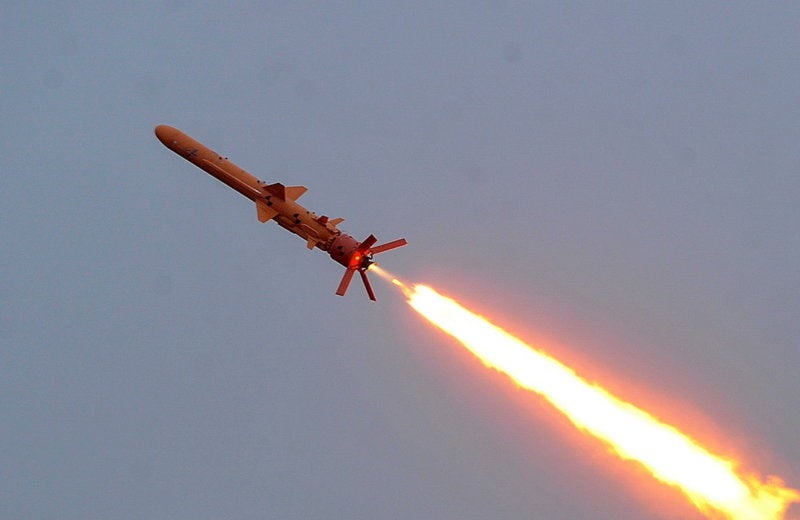Ukrainian ‘Neptune’ Anti-Ship Missile Adopted By Ukrainian Naval Forces
On 23 August, 2020 the Ukrainian Naval Forces adopted the R-360 (otherwise known as RK-360 or RK-360MC) coastal defense anti-ship missile, concluding a long development cycle. The missile was first announced in 2013, mirroring the layout of the similar Kh-35 Russian anti-ship missile. But the need to establish fully domestic production of engine parts and a new guidance unit delayed flight testing until 2016. Final development occurred in 2019, and the missile began Ukrainian acceptance trials soon after.
Technically, the Neptune is relatively simple compared to the cutting edge of anti-ship missiles. It relies on a traditional inertial navigation with active radar homing guidance suite, lacking the advanced “smart” and swarming capability of the Norwegian/American Naval Strike Missile, the stealth of the American LRASM, or the hypersonic speed of the Russian Tsirkon. But theoretically the Neptune should be able to make up for it with numbers, as a land based coastal defense missile. A single divisional battery of Neptunes would consist of four launchers with six missiles each, enabling them to fire a 24 missile salvo at various targets. The battery structure also calls for 48 additional missiles on transport vehicles to reload the launchers.
Check out our Short Guide to Naval Missiles
According to the Kyiv Post, Ukraine plans to procure three divisions of Neptune launchers by 2025, with one facing the Azov Sea, the other facing the Black Sea, and the last as a strategic reserve. The investment into anti-ship missiles shows a commitment to a defensive posture by Ukraine; coastal missiles, while relatively inflexible provide some of the best economy of force on the defense. But as Russia continues to use the port facilities in Crimea for their own purposes, the deployment of a Neptune battery facing the Black Sea may be seen as a way to potentially threaten the Russian Black Sea Fleet if tensions escalate,

